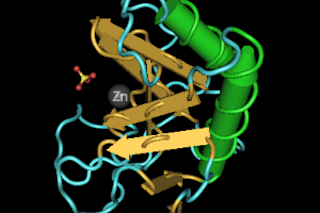The protein produced by the sonic hedgehog gene. Wikimedia Commons. I was listening this morning to Joe Palca’s sad, beautiful story on NPR's Morning Edition about medulloblastoma, the most common childhood brain cancer. Among adults the cancer hardly every occurs — its prevalence is about 8 cases for every 10 million people. In children there are 5 cases per 100,000. One of them is a 12-year-old boy named Carver, who is being treated at Seattle Children’s Hospital. Carver’s brain tumor was successfully removed by surgery but not without side effects. “Carver's short-term memory is a mess,” Palca reported, “ and he has difficulty walking. His eyes haven't been pointing straight since his tumor was removed. That'll take more surgery to fix. None of these problems was caused by Carver's cancer.” They're the result of the treatment. Palca was quick to add that the doctors aren't considered to be at fault. ...
Glowing Tumors, Cyclopean Eyes, and a Cancer Called Medulloblastoma
Explore insights into medulloblastoma childhood brain cancer, its treatments, and innovative technologies like tumor paint.
More on Discover
Stay Curious
SubscribeTo The Magazine
Save up to 40% off the cover price when you subscribe to Discover magazine.
Subscribe













